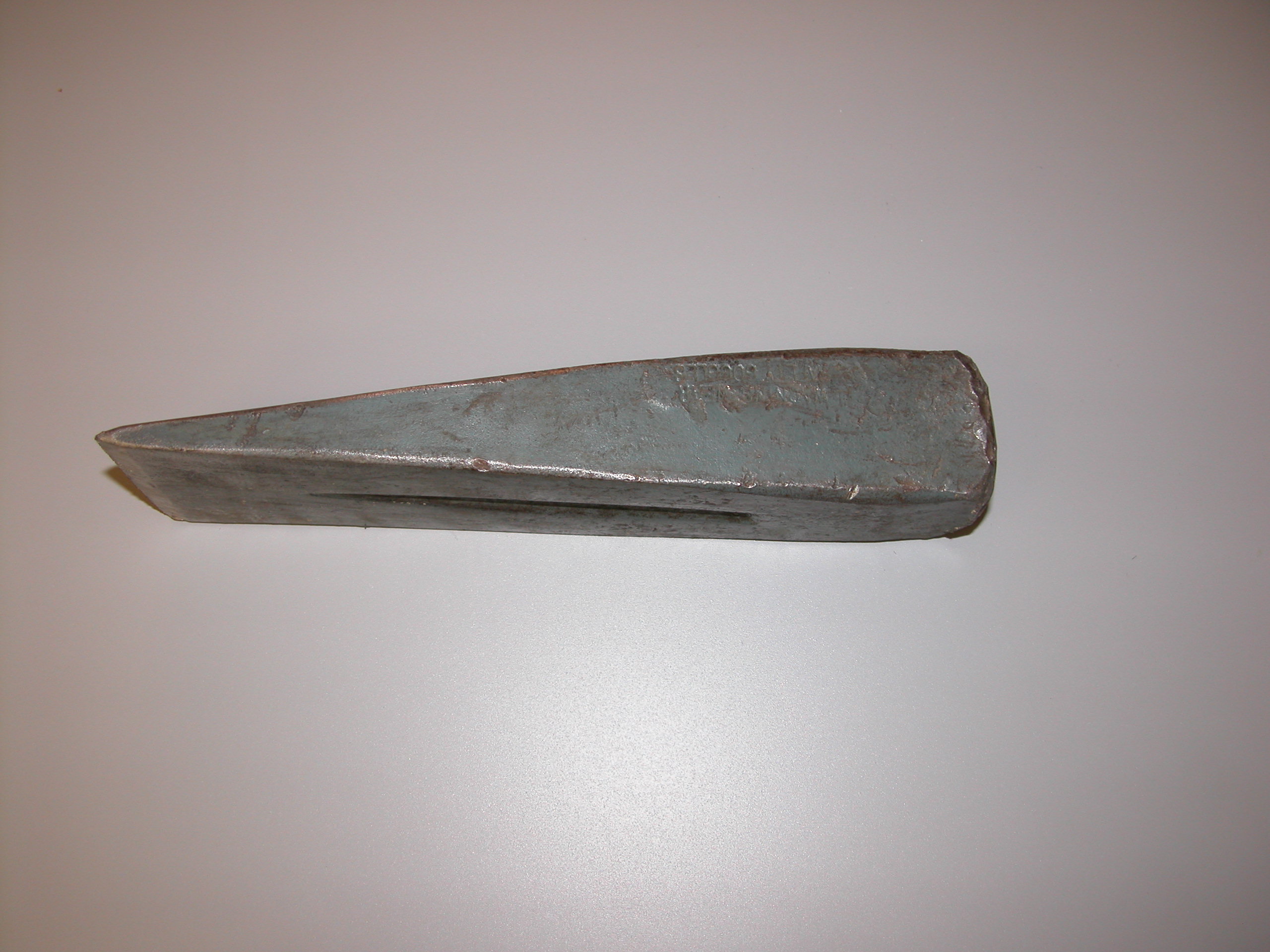- Wedge (mechanical device)
Infobox tool
name = wedge

caption =Woodsplitting wedge
other_name =
classification =Hand tool
types =
used_with =Sledgehammer
related =Chisel Splitting maul Axe otheruses2|WedgeA wedge is a triangular shaped tool, a compound and portable
inclined plane , and one of the six classicalsimple machine s. It can be used to separate two objects, or portions of objects, lift an object, or hold an object in place. It operates by converting aforce applied to the wide end into forces perpendicular to the inclined surfaces. Themechanical advantage of a wedge depends on the ratio of its length to its thickness. Where a short wedge with a wide angle does the job faster, it requires more force than a long wedge with a smaller angle.History
The origin of the wedge is unknown, because it has been in use for over 9000 years. In
Ancient Egypt quarry s,bronze wedges were used to break away blocks of rock used for construction.Wood wedges, that swelled after being wet, were also used. Some Native American tribes usedantler wedges as a means of splitting and working wood to makecanoes , houses, and other wood objects.Examples for separating and lifting
Examples include
axe s,splitting maul s, and splitting wedges. Wedges can also be used to lift heavy objects, or finely adjust the height of objects, essentially separating them from the surface they rest on. These may also be referred to as shims. Knives,scissors ,chisel s, and even teeth can sometimes be used as wedges, however, they are more fundamentallycutting implements.Examples for holding fast
Wedges can also be used to hold objects in place, such as engine parts (
poppet valve s),bicycle parts (stems and eccentricbottom bracket s), anddoor s.A door stop (door wedge) is a wedge, and its main function is to generate friction between the bottom of the door and the ground.
A fork or nails can also be considered a type of wedge. While a nail will slice into wood when hammered, a bolt will not be pushed in. This is because a nail is a wedge and a bolt is not. A nail is tapered to a point at its end, then gets thicker farther up towards the head of the nail.
Mechanical advantage
The mechanical advantage of a wedge is the length of the sloping side of the wedge divided by the width of the thick end of the wedge. Therefore the formula for a wedge is:
In other words, divide the length of the wedge by its width at the thickest edge.
The more acute the angle of the wedge, the more mechanical advantage it will have.
Despite this, one reason that many splitting wedges have a wide angle is that an elastic material, such as wood, will bind a narrow wedge more readily than a wide wedge. This is why splitting mauls have a much larger angle than an axe.
ee also
*
Axe
*Inclined Plane
*Screw
*Splitting maul External links
* [http://em-ntserver.unl.edu/Negahban/em223/note16/note16.htm (Mechanics of) wedges and screws]
Wikimedia Foundation. 2010.
